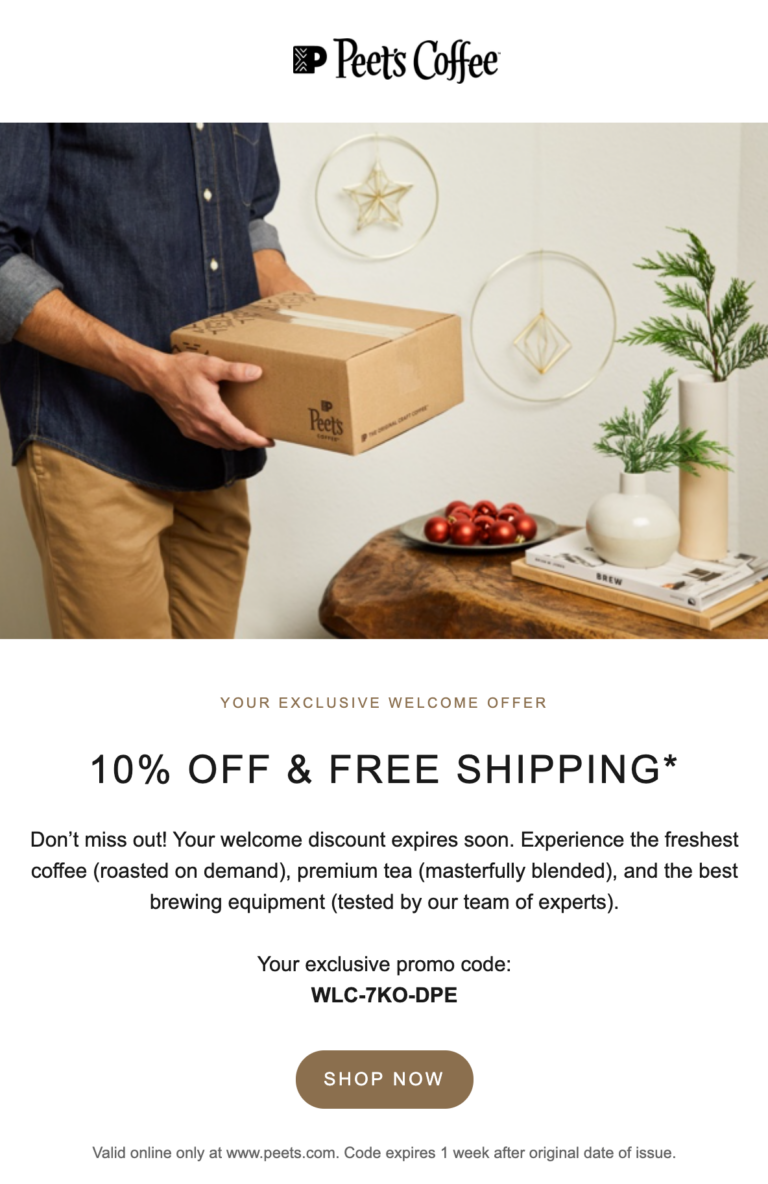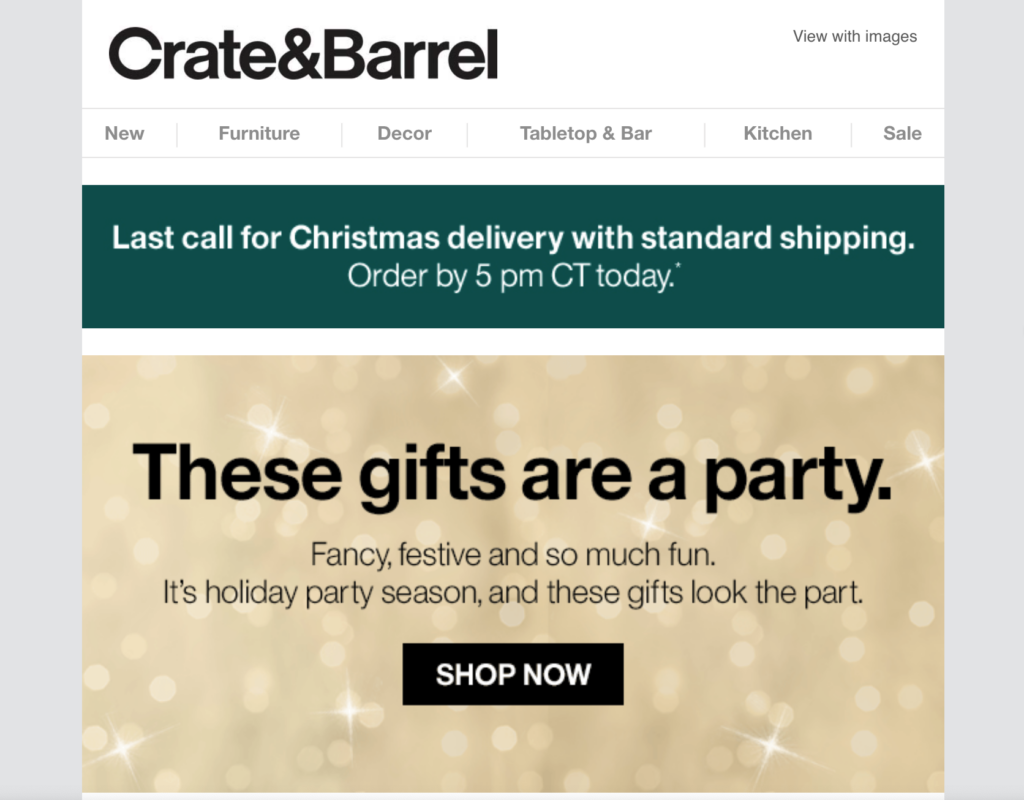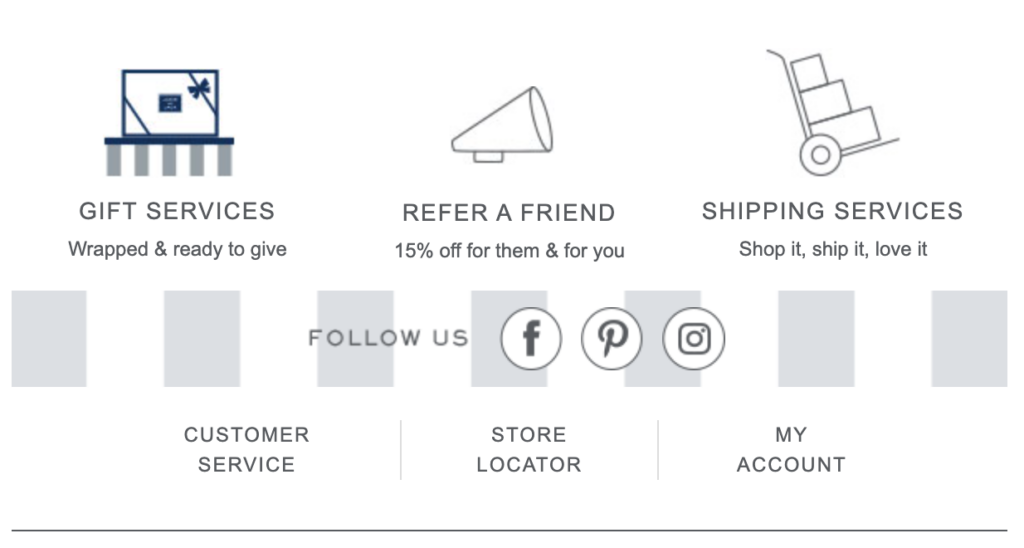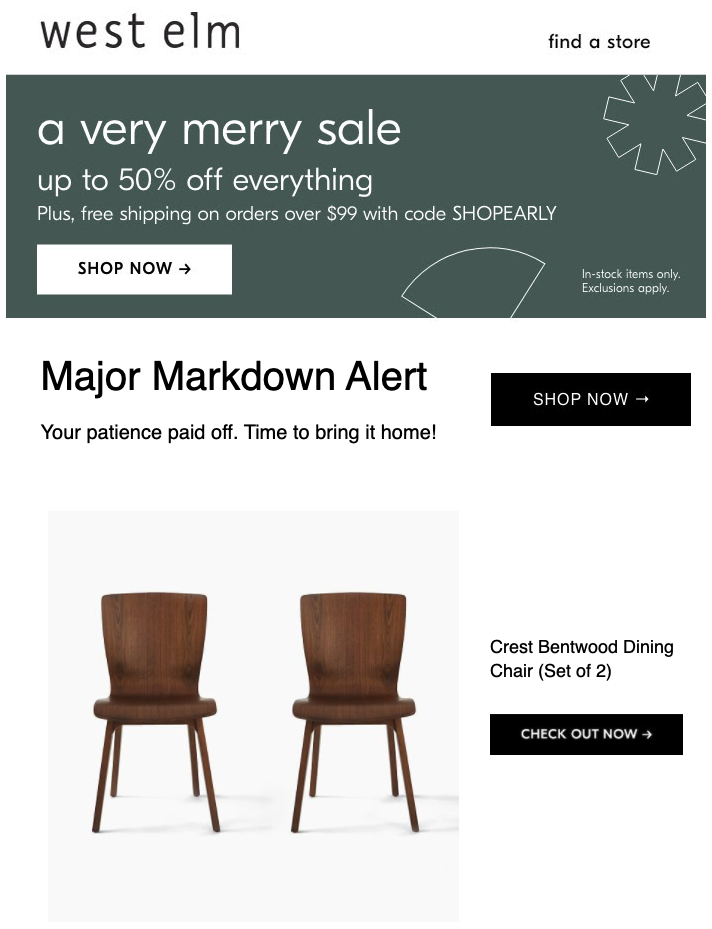Why Triggered Emails Are Your Holiday Email Marketing Secret Weapon
The holiday season is upon us, and that means email marketers are busy. It’s now or never to send holiday email campaigns that close the gap between your goals and your current numbers. This is when your subscribers go into high gear shopping and buying gifts for their friends, family, and themselves. In 2022, holiday shopping broke records (again) at $211.7 billion.
But there’s one secret to a successful holiday email marketing campaign that you’re probably overlooking: Your triggered emails.
Triggered emails have a “set it and forget it” reputation. While it’s certainly a lower lift than the everyday email campaigns you build from scratch, you should review your triggered emails on a regular basis. Yes—the holiday season is busy. But if sales is your goal, now is the time to evaluate your triggered emails and tailor them for the holidays.
First, make a list (and check it twice) of your different triggers running. Then, check out these seven tips to make them even better for the holidays.
1. Timing is of the essence
With the sense of urgency caused by limited-time and limited-assortment sales, the amount of time buyers spend considering a purchase is much shorter during the holiday season—especially during Black Friday and Cyber Monday. How long does it take for your abandoned cart emails to reach your subscriber?
Source: Really Good Emails
Source: Really Good Emails
Source: Really Good Emails
To determine the right window for your subscribers, take a look at how long it takes for the majority of cart abandoners to return to their cart on their own—if they do at all. You’ll want to send your cart abandonment email slightly after that time, so you’re nudging buyers along but not interrupting their normal buying behavior.
Don’t have that data? Go back and determine the natural rate of return for your customers during Black Friday and other key holiday shopping days last year. Or, if you’re unable to, look at your shoppers’ behavior during your other sales. Use those behaviors to determine your ideal delay for your cart abandonment emails. When in doubt, keep it speedy and use this year as a baseline for the future.
2. Welcome all those new subscribers with a seasonal offer
If you’re advertising a 35% discount in your social media ads and on a website banner, plus free shipping if you sign up for emails, then you need to make 100% sure that you’re delivering on that promise when new subscribers sign up. Now is a good time to replace your current welcome email flow with a seasonal one—especially if you’ve seen an influx of net-new traffic to your site in past seasons.
One way to do this is to go in and replace your existing welcome offer with dynamic content that you can more easily change as the season goes on:
Source: Really Good Emails
Source: Really Good Emails
Source: Really Good Emails
But this is also a good time to evaluate the entire welcome email. It might feel jarring to new subscribers focused on holiday shopping to see a generic welcome, especially if they’re buying gifts. Adjusting some of your email copy and adding seasonal imagery can go a long way toward building a more authentic relationship with new subscribers—who may have come for gift-giving but then decide to stick around and see what you can offer them, too.
Here are some ways you can implement seasonal branding and messaging to your welcome emails:
- Use seasonal imagery (or animated GIFs)
- Link to gift guides and holiday discounts
- Share upcoming order-by deadlines
You can always add a seasonal element to your first welcome email and then drop them into the rest of a more traditional flow, or pause your standard welcome series during this time and stick with more behavioral triggers after that first welcome offer.
3. Add a little merry merry with holiday headers and footers
Similar to how retailers decorate their stores for the holidays, you can mimic the same strategy to get your shoppers in the holiday shopping mood. A visual signal—like a holiday-branded version of your logo or header—acts as a subtle reminder to shoppers.
Here is what Food52 did to dress up their header for the holiday:
Normal header
Holiday header
Or you can add a module after your header or navigation bar reminding folks about your order deadlines, like Crate & Barrel did here:
It’s relatively easy to add a header across all of your emails with the right dynamic content in place (or adjusting a holiday email template, like one from our free email template library.)
But don’t make your new header too flashy or big—remember, about half of your subscribers are likely reading your holiday emails via mobile devices. Instead, convert a desktop “Gifts” or “Holiday” navigation bar links into tappable mobile call-to-action icons and boxes, like how Target adjusted their emails:
Since headers are prime real estate, consider adding more information and calls-to-action into your triggered emails’ footers near the bottom of your triggered emails, as well as any additional information on topics your subscriber might find helpful—like gift guides, gift services, or extended holiday returns.
Yours can be rather simple, like this from Janie and Jack:
Or extensive, like this one from The Citizenry, which includes links to their gift guides, holiday gift landing page, and gifting-specific language.
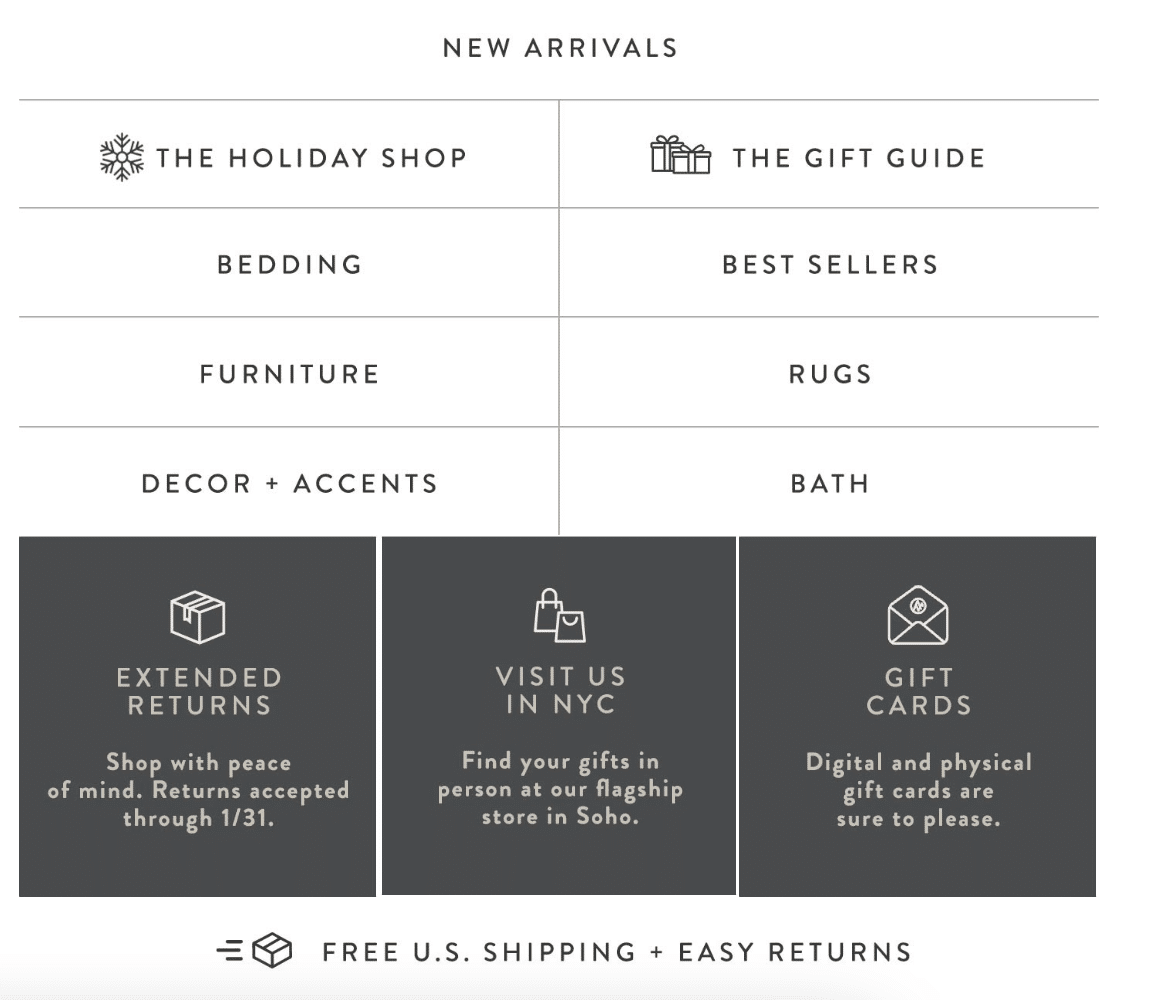
There’s no need to red-and-green your entire triggered email set. A little holiday magic can go a long way toward cohesive brand-building (and hide the fact that it’s an automated trigger.)
4. Add deals and discounts in unexpected places
Next, think about all the places your seasonal promotions and discounts could sit. What triggered emails do you have that you typically don’t offer savings on?
Think about product-adjacent triggered emails that already drive sales, like:
- Adjusting your typical abandoned cart deal to align with the seasonal promotion
- Adding a discount or deal to your back-in-stock or product replenishment announcements to get that same-session conversion
- Including seasonal imagery or promotions in a loyalty milestone email
This is a great place to add a CTA block about featured products, a reminder of order cut-off dates, or mention your holiday gift guides. And if you’re worried about changing discount codes in so many places, it might be time to look into a real-time personalization tool to reduce the number of email versions you’d have to create and test (like Movable Ink or Liveclicker), empowering you to create more personalized, dynamic experiences.
In this Black Friday email from Under Armour, multiple uses of real-time personalization are used in action. First, the offer in the email is a unique barcode. Second, by using Movable Ink, they were able to generate store location information based on the time of the email’s open.
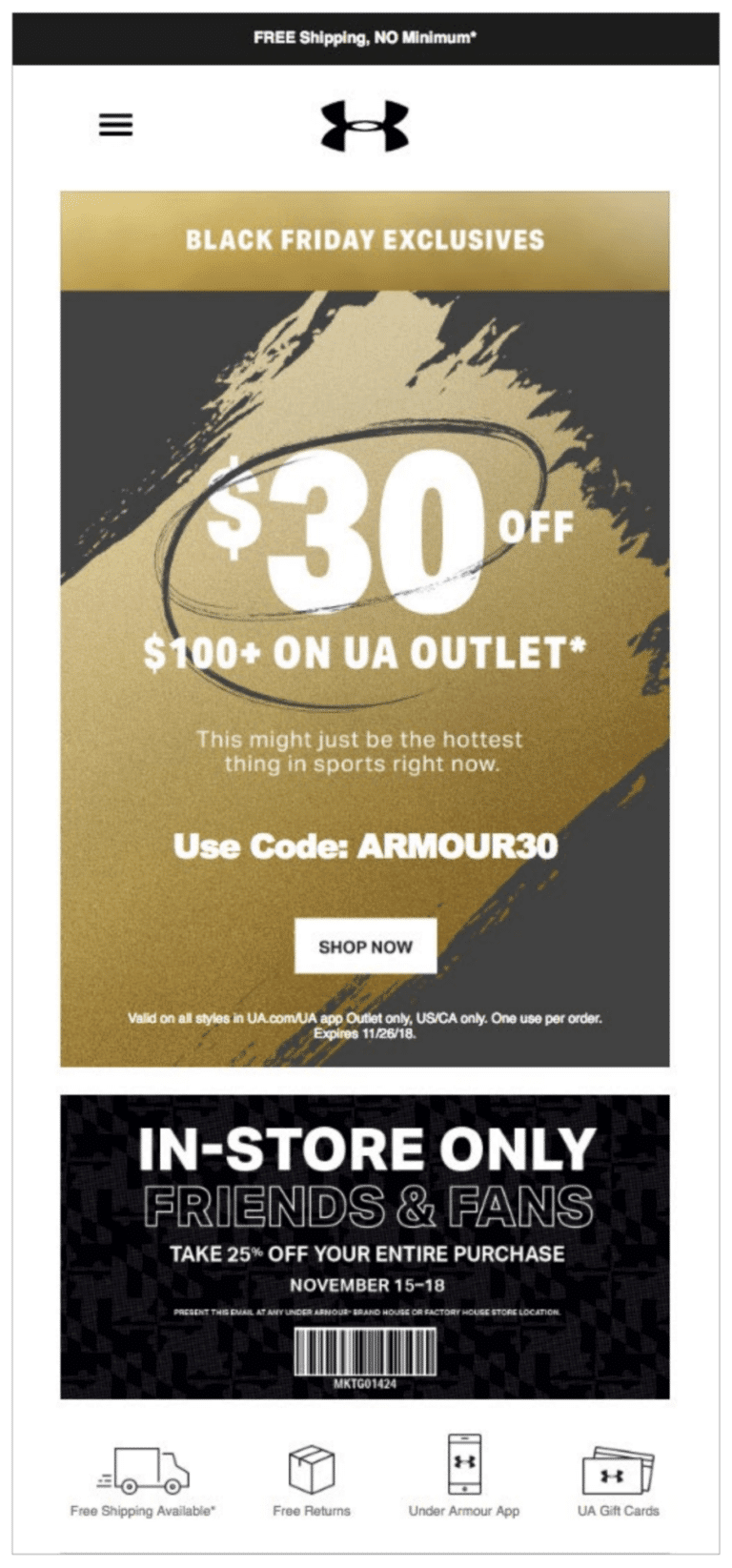
That way, if a promo code for a Black Friday sale has expired, but you’d like to swap it in time for Cyber Monday, using a real-time personalization tool can allow you to do just that—in one place. You’ve got plenty of other work to do during the holiday season, so automate as much as you can.
5. Let your subject lines be merry and bright
Another easy festive swap for your triggered emails to do more this season? Change up your subject lines to match what attracts shoppers during this season. Think: gifting, rom-com references, holiday puns, seasonal emojis, and of course, deals.


While of course you’ll save your best subject lines for your one-off campaigns, don’t neglect your triggered emails. Try a few subject line swaps through A/B testing, especially for those emails your shoppers definitely will encounter, like browse abandonments, restock notices, and transactional emails like shipping and receipts.
6. Send shipping reminders and deadlines
The biggest difference between shopping during the holiday season and the rest of the year? Shoppers are on a deadline. You already know how long it takes to ship during busy times like these, so make sure your subscribers know, too. While you may want to send out a dedicated email for procrastinators as it gets closer, consider creating a specific trigger for shoppers still on the fence.
This one from the Citizenry includes a specific shipping CTA, along with a countdown block:
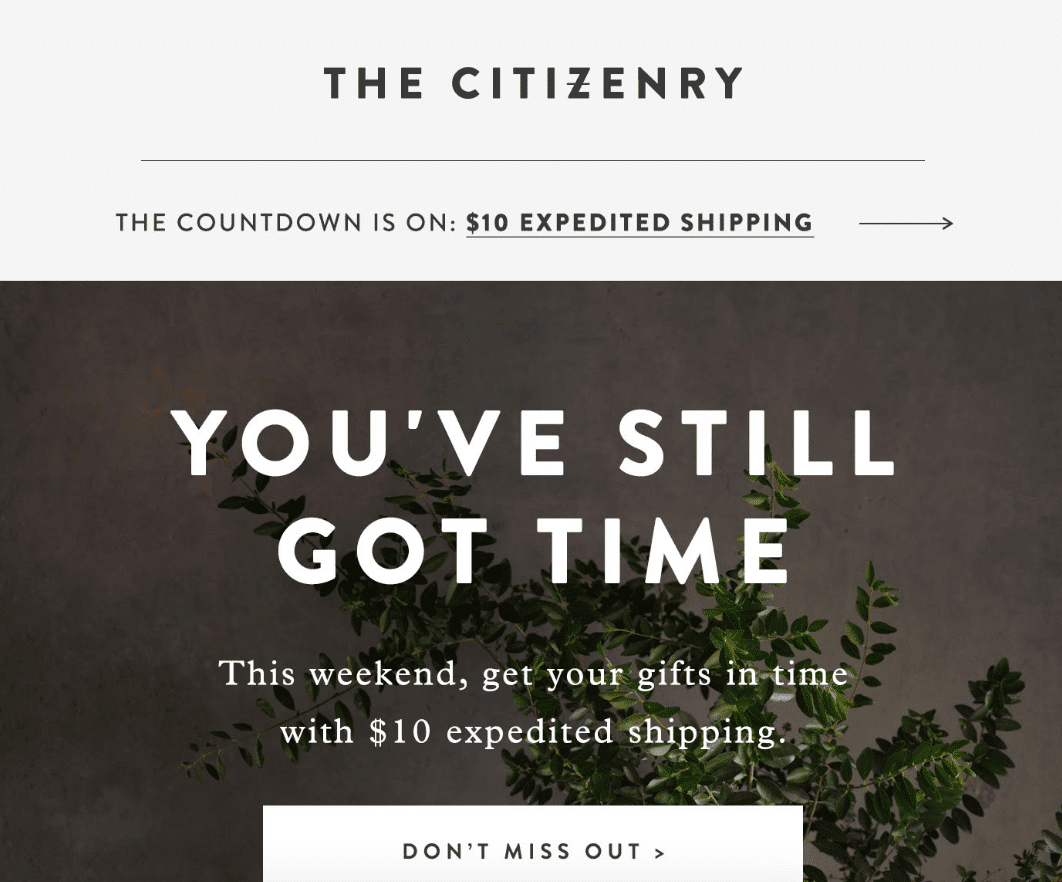
This one from Lake Pajamas is for true procrastinators, advertising gift cards as a last-minute gift:

You can also add reminder CTA blocks into your existing triggered emails (like your standard abandoned cart, for example) so that shoppers know if they wait too long, their gifts won’t arrive. Hanna Andersson changed out their blocks as time went by last season.
On December 16:

On December 19:

On Christmas Eve:

You can also add a block to your footer, like Roller Rabbit did for their campaigns after December 15:
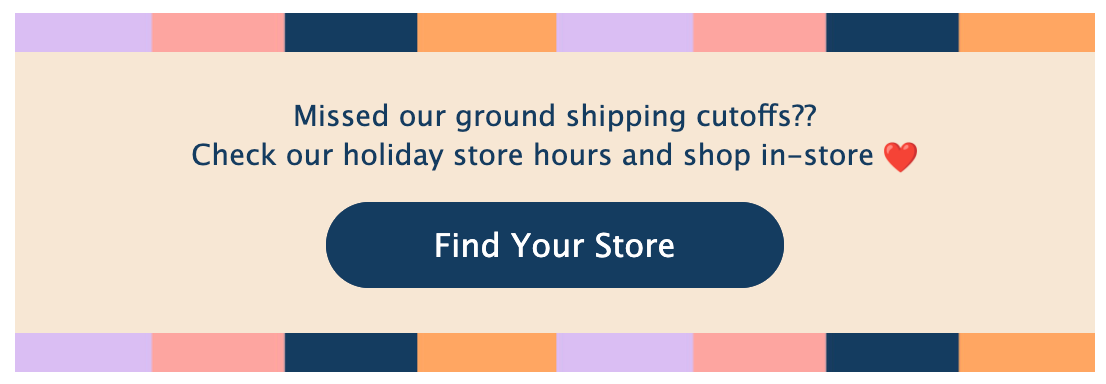
Segment your subscribers by browsing and cart behavior—if they’ve been hanging around on your site all season but still haven’t pulled the trigger, see if a hard deadline can add a sense of urgency.
7. Incorporate gifting into your behavioral campaigns
Behavioral campaigns are designed to get inside the head of a prospective buyer. What kind of nudge do they need to make the purchase? For the holiday season, it’s all about gifting. Now is the time to take a look at your existing triggered emails and consider swapping out imagery or language to be more seasonally appropriate…otherwise, you may find subscribers opting out.
Take a look at your behavioral data from your frequent shoppers. For example, if you’re see someone browsing in the kitchen and tabletop of your site when they usually only purchase bedding or bath items, they’re likely looking for a gift—or even better, if you’ve created a holiday or gift guide section of your site, create a specific follow up or browse abandonment email meant to help them decide what’s going under the tree this year.
You can start with an easy header swap, like this one from Anthropologie:
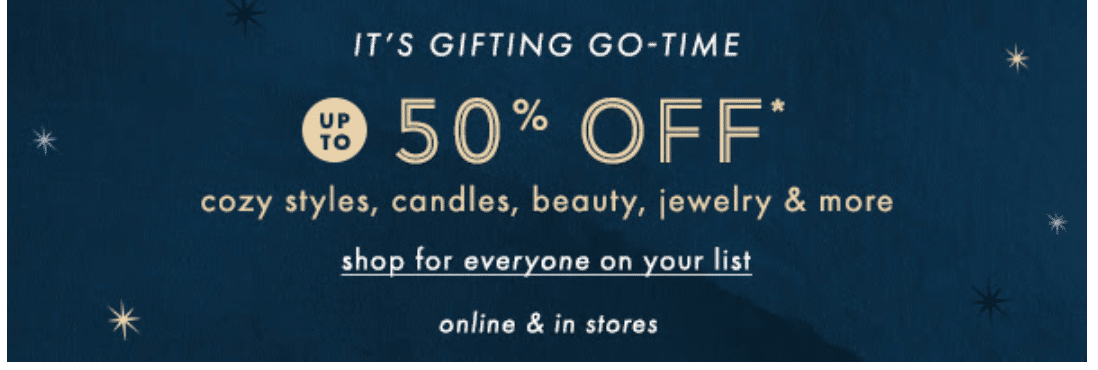
Puzzle company Jiggy added a section to the bottom of one of their triggered emails with social proof:
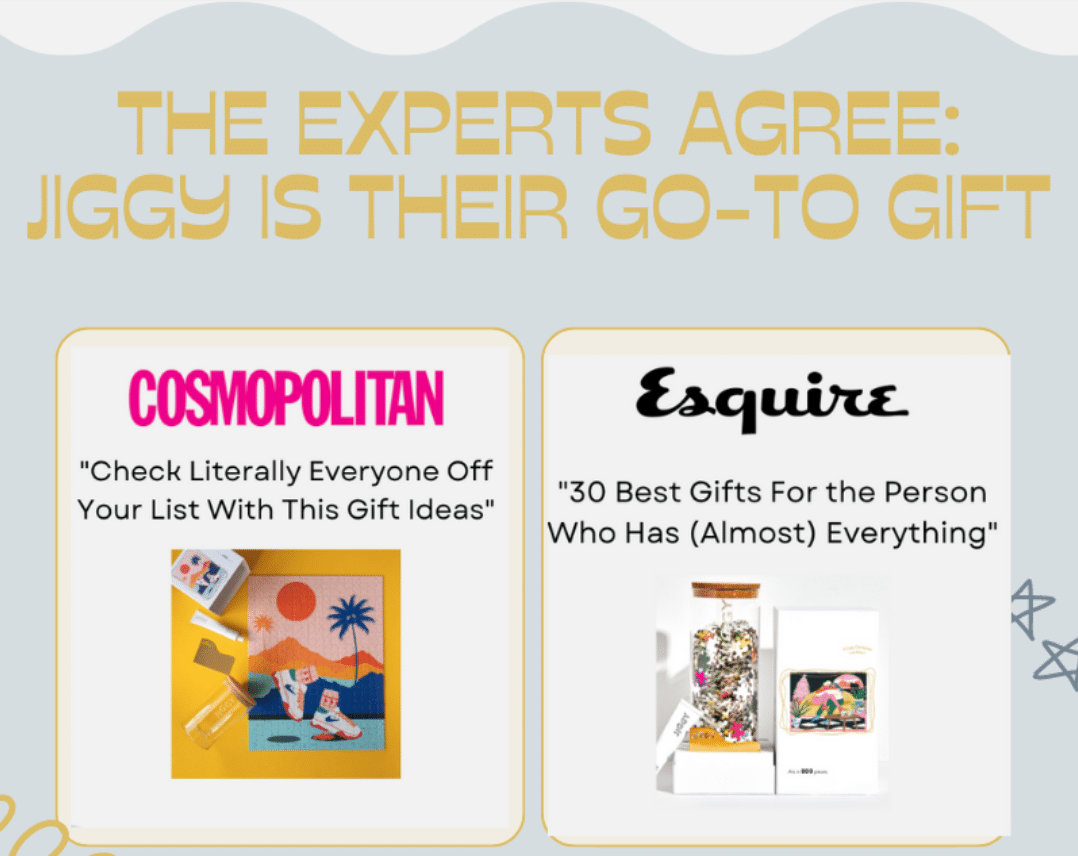
So did retailer Tuckernuck, who added gifting-specific footers to their emails:
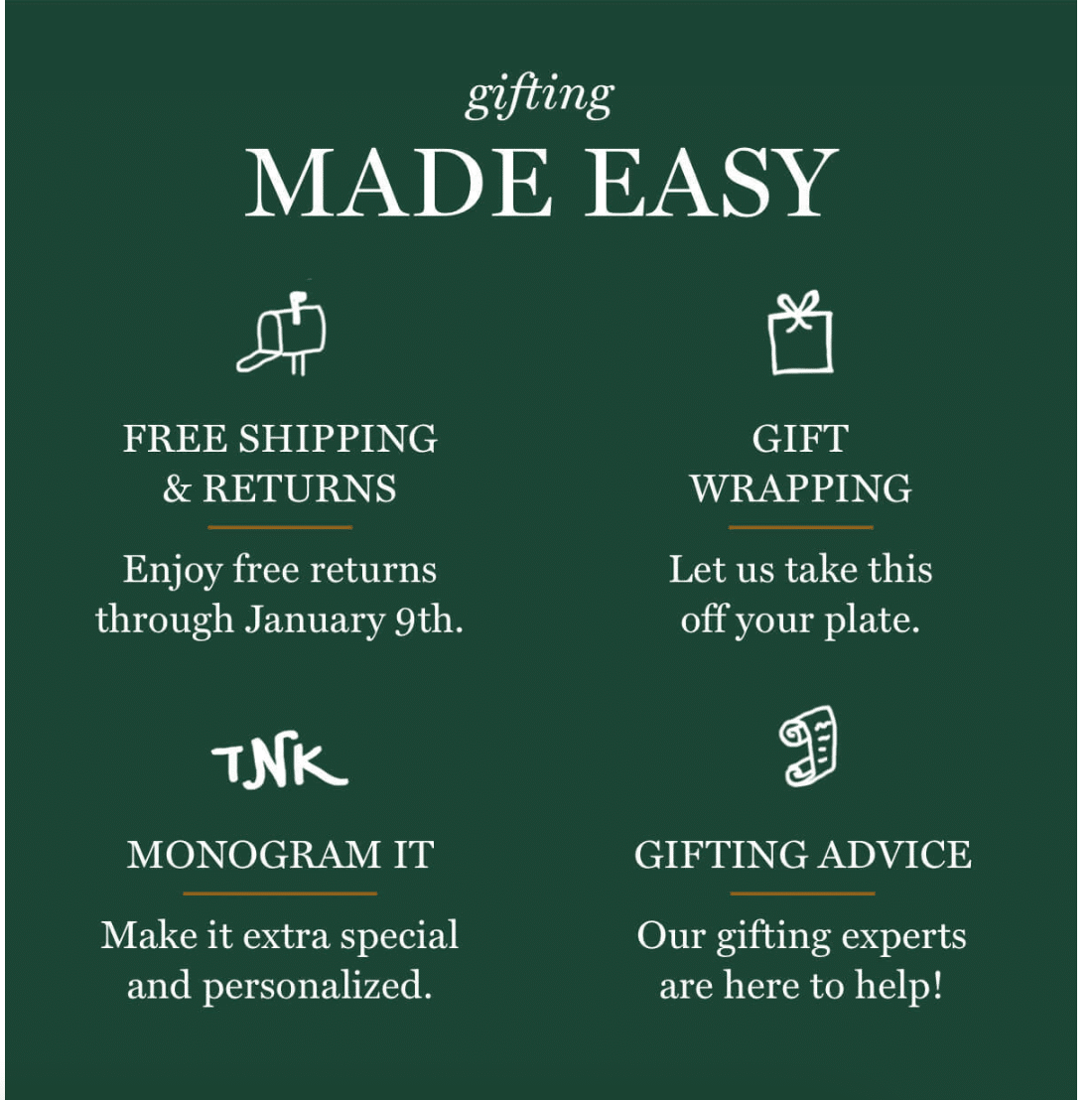
Shoppers are 6x more likely to buy from a personalized email than a generic one, so the more tailored you can make your triggered emails to how shoppers actually approach the holiday season, the better off you’ll be.
Make the season bright with free email templates for your triggered emails
This holiday season, don’t let your triggered emails languish in “set it and forget it” mode. Instead, make the most of every single campaign that graces subscriber inboxes. If you need a little inspiration, we’re here to help. Our extensive library of free email templates includes mobile-friendly triggered email campaigns that you can easily customize for the holiday season.

Kayla Voigt
Kayla Voigt is a freelance writer
